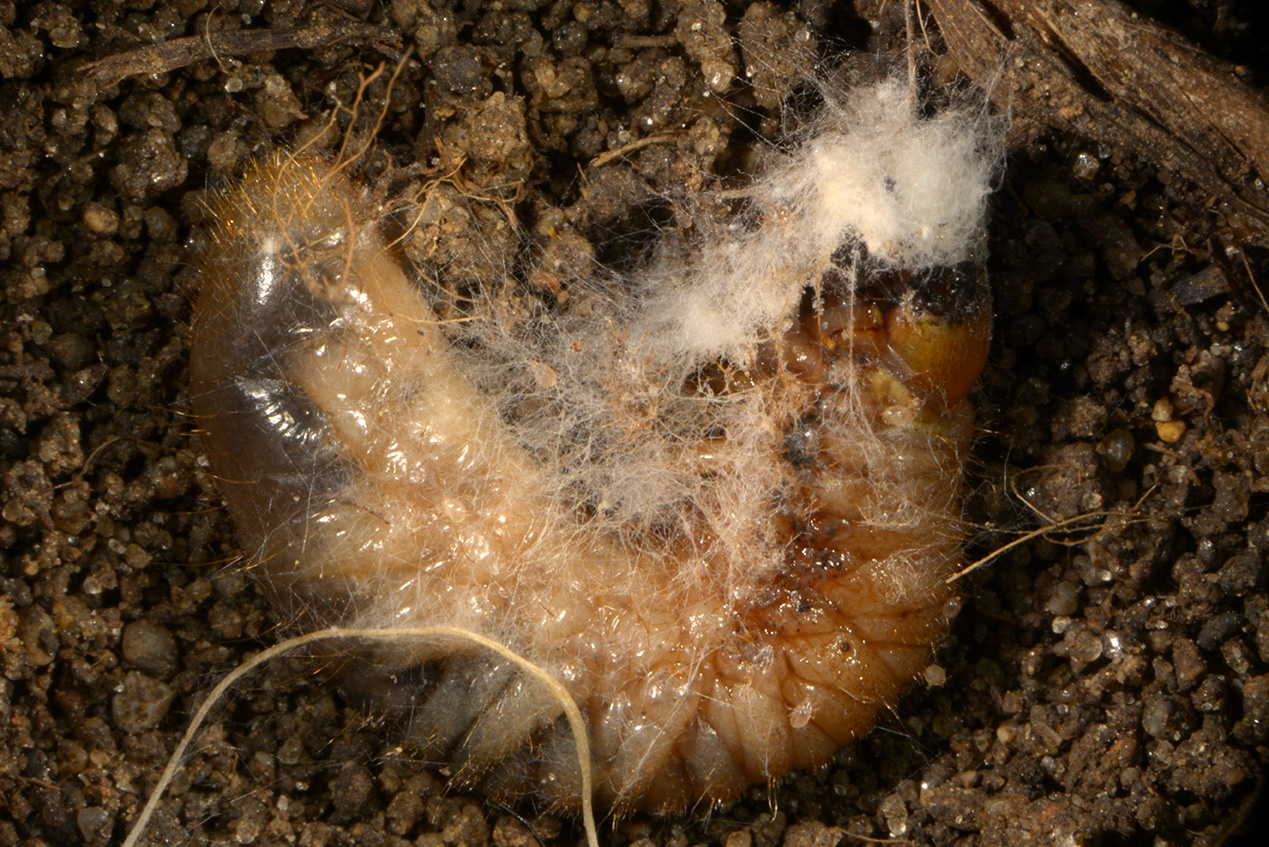After the very cold conditions of early January, a very common question received (and this is the case every year after a cold spell) was: “will the cold kill the insects?” And more recently, our attention has turned to the saturated soil conditions, “will that drown the insects?” The answer for both is (as always): “It depends, but probably not.” Most of our long-term established pests (rootworms, grubs, wireworms, corn borers, etc.) have been here for decades, and their populations have experienced these extremes in the past, so its unlikely that their populations will suffer much.

Grub that has succumbed to WET and WARM soils.
Overwintering insects utilize various behavioral and physiological mechanisms to keep them from dying during the long winter months. Survival tactics include, but are not limited to: lowering metabolic rates, reducing water content in essential tissues, and finding protected microenvironments. Consider the table below, which summarizes temperatures from the past five winters. All data were taken at the Agronomy Center for Research and Extension (ACRE), not far from the main Purdue campus. Looking at the second column from the left, we see the average air (or ambient) temperatures were lower this past winter than those of the past few. Still in our memory was the “polar vortex” winter of 2013/2014, that was COLD!
The more telling number appears in the next column, where the average temperatures at a 4” soil depth appear. Looking at this number, we see that the winter was not as harsh just a few inches below the surface. Note that the temperature swings are lower in the soil. This is important because insects typically do not overwinter above-ground – seeking shelter and safety from the elements and predators below ground instead. This subjects them to much less variation in temperatures –soil takes longer to warm up and cool down than the air does. Depending upon snow cover, which can provide even more of a buffer, temperatures in the soil will remain remarkably constant and often warmer than the air as the snow provides some insulation.
Average Winter Temperatures (ACRE), West Lafayette, Indiana
Winter Avg. Ambient Avg. 4” Bare Soil
(Dec. – Feb.) Temp. (F) Temp (F)
17/18 28 34
16/17 33 37
15/16 33 35
14/15 26 31
13/14 22 29
For ground dwelling insects subjected to the deluge of rain storms these last many weeks, they will likely do just fine. At temperatures below 40ºF, insect respiration rates are very low – essentially zero. So even in saturated conditions, insects are able to “hold their breath” for long periods of time, as long as soils are cool. On the other hand, when soils warm (spring and summer) and insects increase their metabolic rates, they are subject to drowning and/or starvation. This is particularly true for larval insect stages, such as caterpillars and beetle grubs. We have experienced this in past years when heavy rains saturated soils during the time of corn rootworm egg hatch in late May to early June. Newly hatched larvae require oxygen as they move in the soil profile searching for corn roots. They are also “blinded” as their ability to detect root volatiles is greatly diminished in water-logged soils. In these conditions, it is death by drowning or starvation. It can be a cruel world out there! Sad!


